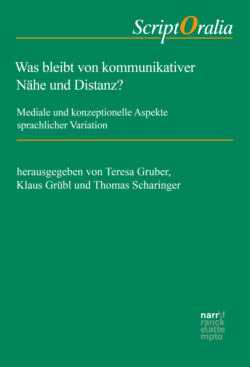Читать книгу Was bleibt von kommunikativer Nähe und Distanz? - Группа авторов - Страница 18
Ipertesti e iperdiscorsi
ОглавлениеProposte di aggiornamento del modello di Koch e Oesterreicher alla luce dei testi nativi digitali1
Emilia Calaresu (Modena/Reggio Emilia) & Massimo Palermo (Siena)
The aim of this paper is to verify the suitability of Koch and Oesterreicher’s ‘orality/literacy model’ to account for the important innovations introduced by the digital revolution, with particular regard to EMC (Electronically Mediated Communication). After an introduction on digital textuality and an overview of Italian studies on the differences and interplays between written and spoken language, both the ‘conceptional’ and ‘medial’ dimensions of the model are reviewed. This is done to test to what degree their specific parameters fit for EMC, which allegedly shows features of both written and spoken language. Special attention will be given to the fact that on the internet, some textual genres still display their processual character, even in their final form, thus challenging the traditional distinction between ‘text’ as a product and ‘discourse’ as a process. Due to their pragmatic flexibility, the conceptional parameters of the model still seem suitable to account for the new types of communication and require only a few adjustments. Conversely, the medial dimension of Koch and Oesterreicher’s model requires a more precise redefinition. This is further compounded by the relevance of diverse technological innovations: it will be useful to pay greater attention to the differences between ‘medium’ (material or technical means of transmission) and ‘channel’ (phonic vs. graphic), as well as the general semiotic and communicative circumstances that distinguish different formats of communication – such as real face-to-face conversation from semi-synchronous chat.
